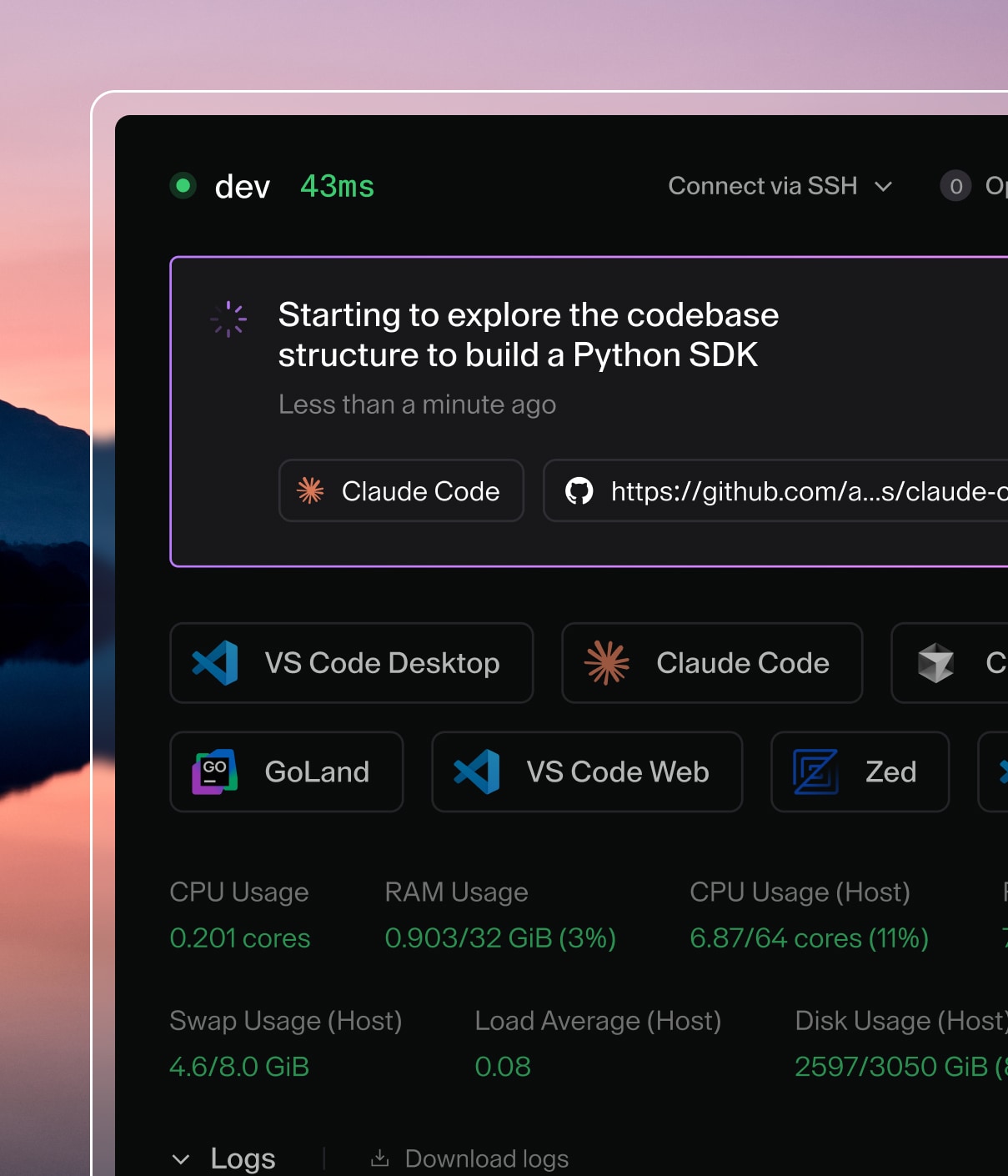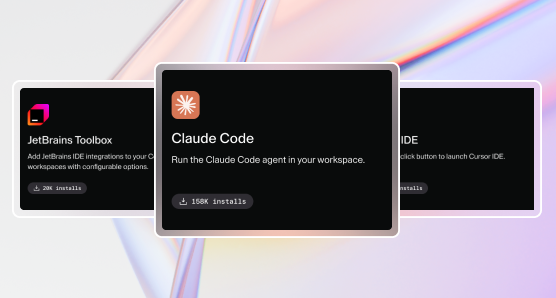Azure DNS
cert-manager allows you to enable HTTPS on your Coder installation, regardless of whether you're using Let's Encrypt or you have your own certificate authority.
This guide is for Coder v1.21.0 and later, which handle certificates differently from earlier versions of Coder. Ensure that you're reading the docs applicable to your Coder version.
This guide will show you how to install cert-manager and set up your cluster to issue Let's Encrypt certificates for your Coder installation so that you can enable HTTPS on your Coder deployment. It will also show you how to configure your Coder hostname and dev URLs.
There are three available methods to configuring the Azure DNS DNS01 Challenge via cert-manager:
- Managed Identity Using AAD Pod Identities
- Managed Identity Using AKS Kubelet Identity
- Service Principal
This guide will only walk through the first option, though the prerequisites are the same regardless of which option you choose.
We recommend reviewing the official cert-manager documentation if you encounter any issues or if you want info on using a different certificate issuer.
Prerequisites
You must have:
- A Kubernetes cluster of a supported version with internet connectivity
- Installed kubectl
- Installed Azure CLI
You should also:
- Be a cluster admin
- Have access to your DNS provider
- Have a paid Azure account that allows you to access Azure DNS
Step 1: Create an Azure DNS Zone
Log into the Azure Portal. Using the search bar, look for DNS Zones and navigate to this service.
If Azure DNS is the registrar for your domain, the zone will already exist so you can skip to Step 3.
Click New to create a new zone, and when prompted:
-
Select your subscription and the resource group where your Coder deployment is
-
Provide a name for your new zone
Click Review + create. Review the summary information, and if it's correct, click Create to proceed.
Once Azure has deployed your resource, click Go to resource. Make a note of
the name server records (e.g., ns1-09.azure-dns.com.) presented to you, since
you'll need to provide these four values to your domain provider.
Step 2: Assign Azure name server records to your domain
Navigate to your domain provider, and add the four Azure name server records to the domain you're using for your Coder deployment.
Step 3: Add cert-manager to your Kubernetes cluster
-
Install cert-manager:
kubectl apply -f https://github.com/cert-manager/cert-manager/releases/download/v1.8.0/cert-manager.yaml -
Check that cert-manager installs correctly by running
kubectl get CustomResourceDefinition | grep cert-managerYou should see certificates, certificate requests, challenges, cluster issuers, issuers, and orders.
-
Next, check that your services are running in the cert-manager namespace
kubectl get all -n cert-manager NAME READY STATUS RESTARTS AGE cert-manager-7cd5cdf774-vb2pr 1/1 Running 0 84s cert-manager-cainjector-6546bf7765-ssxhf 1/1 Running 0 84s cert-manager-webhook-7f68b65458-zvzn9 1/1 Running 0 84s
Step 4: Set up a managed identity
AAD Pod Identities enables you to assign an Active Directory Managed Identity to a pod. This allows you to create the DNS records without having to add your credentials to the cluster.
To create the identity with access to the DNS Zone:
# Choose a unique identity name and the resource group to create identity in
IDENTITY=$(az identity create --name $IDENTITY_NAME --resource-group $IDENTITY_GROUP )
# Get principalId to use for role assignment
PRINCIPAL_ID=$(echo $IDENTITY | jq -r '.principalId')
# Identity binding
CLIENT_ID=$(echo $IDENTITY | jq -r '.clientId')
RESOURCE_ID=$(echo $IDENTITY | jq -r '.id')
# Get existing DNS Zone ID
ZONE_ID=$(az network dns zone show --name $ZONE_NAME --resource-group $ZONE_GROUP --query "id" -o tsv)
# Create role assignment
az role assignment create --role "DNS Zone Contributor" --assignee $PRINCIPAL_ID --scope $ZONE_ID
Step 5: Deploy the managed identity
-
Export the following environment variables with your own values:
export SUBSCRIPTION_ID="05e8b285-4ce1-46a3-b4c9-f51ba67d6acc" export RESOURCE_GROUP="workshop-202103" export CLUSTER_NAME="coder-workshop-202103"The subscription ID comes from your Azure subscription. The resource group should be set to the resource group that owns the cluster. The cluster name is the name Azure uses to refer to the required Kubernetes cluster.
-
Deploy the AAD Pod Identity components to an RBAC-enabled cluster:
kubectl apply -f https://raw.githubusercontent.com/Azure/ aad-pod-identity/master/deploy/infra/deployment-rbac.yaml # For AKS clusters, deploy the MIC and AKS add-on exception by running the following kubectl apply -f https://raw.githubusercontent.com/Azure/ aad-pod-identity/master/deploy/infra/mic-exception.yamlIf you're using a non-RBAC cluster, remove the
-rbacflag from the initial command -
Deploy AzureIdentity and AzureIdentityBinding. To do so, create an
azureId.yamlfile using the template below to deploy the custom resources required to assign the identity:apiVersion: "aadpodidentity.k8s.io/v1" kind: AzureIdentity metadata: annotations: # We recommend using namespaced identities https://azure.github.io/ aad-pod-identity/docs/configure/match_pods_in_namespace/ aadpodidentity.k8s.io/Behavior: namespaced name: certman-identity namespace: cert-manager # Change to your preferred namespace spec: type: 0 # MSI resourceID: <Identity_Id> # Resource ID From Previous step clientID: <Client_Id> # Client ID from previous step --- apiVersion: "aadpodidentity.k8s.io/v1" kind: AzureIdentityBinding metadata: name: certman-id-binding namespace: cert-manager # Change to your preferred namespace spec: azureIdentity: certman-identity selector: certman-label # The label that needs to be set on cert-manager pods -
Apply the
azureId.yamlfile:kubectl apply -f azureId.yaml -
Set the pod identity label on the cert-manager pod:
spec: template: metadata: labels: aadpodidbinding: certman-label # must match selector in AzureIdentityBindingThis label tells the cluster which pods are allowed to use the IAM role specified earlier. For our purposes, we want the cert-manager pod to be able to set the DNS records for dns01 challenges. The side effect is that any pod with that label will be able to change DNS settings in the authorized zone.
Step 6: Create the ACME Issuer
-
Create a file called
letsencrypt.yaml(you can name it whatever you'd like) to specify thehostedZoneName,resourceGroupNameandsubscriptionIDfields for the DNS Zone:apiVersion: cert-manager.io/v1 kind: ClusterIssuer metadata: name: letsencrypt spec: acme: email: [email protected] server: https://acme-v02.api.letsencrypt.org/directory privateKeySecretRef: name: example-issuer-account-key solvers: - selector: dnsZones: - # Your Azure DNS Zone dns01: azureDNS: subscriptionID: SUBSCRIPTION_ID resourceGroupName: RESOURCE_GROUP hostedZoneName: ZONE_ID # Azure Cloud Environment, default to AzurePublicCloud environment: AzurePublicCloudMore information on the values in the YAML file above can be found in the dns01 solver configuration documentation.
-
Apply your configuration changes:
kubectl apply -f letsencrypt.yamlIf successful, you'll see a response similar to:
clusterissuer.cert-manager.io/letsencrypt created
Step 7: Create a certificate
Note: If you are providing an ingress, certificates can be automatically created with an ingress annotation. See the cert-manager docs for details. If you are unsure whether you are using an ingress or not, continue with this step.
In a text editor, create a new file called certificate.yaml and paste the following:
apiVersion: cert-manager.io/v1
kind: Certificate
metadata:
name: coder-certs
namespace: coder # Your Coder deployment namespace
spec:
commonName: "*.coder.example.com"
dnsNames:
- "coder.example.com"
- "*.coder.example.com"
issuerRef:
kind: ClusterIssuer
name: letsencrypt
secretName: coder-certs
Be sure to change coder.example.com to the domain for your Coder deployment.
While this example uses a single domain, a separate domain can be created for
dev URLs or even omitted if you do not have
dev URLs enabled.
Once you're done, deploy the certificates.
kubectl apply -f certificate.yaml
Step 8: Install/upgrade Coder
At this point, you're ready to install Coder. However, to use all of the functionality you set up in this tutorial, use the following command instead:
# be sure to update the `stringValue` placeholder with the
# proper value for your devurlsHostSecretName and hostSecretName
helm upgrade --install coder coder/coder --namespace coder \
--version=<CODER_VERSION> \
--set coderd.devurlsHost="*.coder.example.com" \
--set coderd.tls.devurlsHostSecretName="coder-certs-stringValue" \
--set coderd.tls.hostSecretName="coder-certs-stringValue" \
--wait
The hostSecretName and devurlsHostSecretName are arbitrary strings that you
should set to some value that does not conflict with any other secrets in the
Coder namespace.
There are also a few additional steps to make sure that your hostname and dev URLs work.
-
Check the contents of your namespace:
kubectl get svc -n <your_namespace> -o wideFind the service/coderd line, and copy the external IP value shown.
-
Return to Azure and go to DNS zones.
-
Create a new record for your hostname; provide
coderas the record name, and paste the external IP as thevalue. Save. -
Create another record for your dev URLs: set it to
*.dev.exampleCoor similar and use the same external IP as the previous step forvalue. Save.
At this point, you can return to step 6 of the installation guide to obtain the admin credentials you need to log in.
Troubleshooting
If you are not getting a valid certificate after redeploying, see cert-manager's troubleshooting guide for additional assistance.


